Entry Database : PDB / ID : 2h43Title Crystal Structure of Human Fragment D Complexed with Ala-His-Arg-Pro-amide Fibrinogen alpha chain Fibrinogen beta chain Fibrinogen gamma chain GLY-HIS-ARG-PRO-AMIDE peptide ligand Keywords / / / Function / homology Function Domain/homology Component
/ / / / / / / / / / / / / / / / / / / / / / / / / / / / / / / / / / / / / / / / / / / / / / / / / / / / / / / / / / / / / / / / / / / / / / / / / / / / / / / / / / / / / / / / / / / / / / / / / / / / / / / / / / / / / / Biological species Homo sapiens (human)Method / / / Resolution : 2.7 Å Authors Doolittle, R.F. / Pandi, L. Journal : Biochemistry / Year : 2006Title : Differences in Binding Specificity for the Homologous gamma- and beta-Chain "Holes" on Fibrinogen: Exclusive Binding of Ala-His-Arg-Pro-amide by the beta-Chain Hole.Authors : Doolittle, R.F. / Chen, A. / Pandi, L. History Deposition May 23, 2006 Deposition site / Processing site Revision 1.0 Dec 5, 2006 Provider / Type Revision 1.1 May 1, 2008 Group Revision 1.2 Jul 13, 2011 Group / Version format complianceRevision 2.0 Jul 29, 2020 Group Atomic model / Data collection ... Atomic model / Data collection / Database references / Derived calculations / Structure summary Category atom_site / chem_comp ... atom_site / chem_comp / entity / pdbx_branch_scheme / pdbx_chem_comp_identifier / pdbx_entity_branch / pdbx_entity_branch_descriptor / pdbx_entity_branch_link / pdbx_entity_branch_list / pdbx_entity_nonpoly / pdbx_nonpoly_scheme / pdbx_struct_assembly_gen / pdbx_struct_conn_angle / struct_asym / struct_conn / struct_ref_seq_dif / struct_site / struct_site_gen Item _atom_site.B_iso_or_equiv / _atom_site.Cartn_x ... _atom_site.B_iso_or_equiv / _atom_site.Cartn_x / _atom_site.Cartn_y / _atom_site.Cartn_z / _atom_site.auth_asym_id / _atom_site.auth_atom_id / _atom_site.auth_comp_id / _atom_site.auth_seq_id / _atom_site.label_asym_id / _atom_site.label_atom_id / _atom_site.label_comp_id / _atom_site.label_entity_id / _atom_site.type_symbol / _chem_comp.name / _chem_comp.type / _entity.formula_weight / _entity.pdbx_description / _entity.pdbx_number_of_molecules / _entity.src_method / _entity.type / _pdbx_struct_assembly_gen.asym_id_list / _pdbx_struct_conn_angle.ptnr1_auth_asym_id / _pdbx_struct_conn_angle.ptnr1_auth_comp_id / _pdbx_struct_conn_angle.ptnr1_auth_seq_id / _pdbx_struct_conn_angle.ptnr1_label_asym_id / _pdbx_struct_conn_angle.ptnr1_label_atom_id / _pdbx_struct_conn_angle.ptnr1_label_comp_id / _pdbx_struct_conn_angle.ptnr1_label_seq_id / _pdbx_struct_conn_angle.ptnr2_label_asym_id / _pdbx_struct_conn_angle.ptnr3_auth_asym_id / _pdbx_struct_conn_angle.ptnr3_auth_comp_id / _pdbx_struct_conn_angle.ptnr3_auth_seq_id / _pdbx_struct_conn_angle.ptnr3_label_asym_id / _pdbx_struct_conn_angle.ptnr3_label_atom_id / _pdbx_struct_conn_angle.ptnr3_label_comp_id / _pdbx_struct_conn_angle.ptnr3_label_seq_id / _pdbx_struct_conn_angle.value / _struct_conn.pdbx_dist_value / _struct_conn.pdbx_leaving_atom_flag / _struct_conn.pdbx_role / _struct_conn.ptnr1_auth_asym_id / _struct_conn.ptnr1_auth_comp_id / _struct_conn.ptnr1_auth_seq_id / _struct_conn.ptnr1_label_asym_id / _struct_conn.ptnr1_label_atom_id / _struct_conn.ptnr1_label_comp_id / _struct_conn.ptnr1_label_seq_id / _struct_conn.ptnr2_auth_asym_id / _struct_conn.ptnr2_auth_comp_id / _struct_conn.ptnr2_auth_seq_id / _struct_conn.ptnr2_label_asym_id / _struct_conn.ptnr2_label_atom_id / _struct_conn.ptnr2_label_comp_id / _struct_conn.ptnr2_label_seq_id / _struct_ref_seq_dif.details Description / Provider / Type Revision 2.1 Oct 30, 2024 Group / Database references / Structure summaryCategory chem_comp / chem_comp_atom ... chem_comp / chem_comp_atom / chem_comp_bond / database_2 / pdbx_entry_details / pdbx_modification_feature Item / _database_2.pdbx_DOI / _database_2.pdbx_database_accession
Show all Show less
 Yorodumi
Yorodumi Open data
Open data Basic information
Basic information Components
Components Keywords
Keywords Function and homology information
Function and homology information Homo sapiens (human)
Homo sapiens (human) X-RAY DIFFRACTION /
X-RAY DIFFRACTION /  SYNCHROTRON /
SYNCHROTRON /  MOLECULAR REPLACEMENT / Resolution: 2.7 Å
MOLECULAR REPLACEMENT / Resolution: 2.7 Å  Authors
Authors Citation
Citation Journal: Biochemistry / Year: 2006
Journal: Biochemistry / Year: 2006 Structure visualization
Structure visualization Molmil
Molmil Jmol/JSmol
Jmol/JSmol Downloads & links
Downloads & links Download
Download 2h43.cif.gz
2h43.cif.gz PDBx/mmCIF format
PDBx/mmCIF format pdb2h43.ent.gz
pdb2h43.ent.gz PDB format
PDB format 2h43.json.gz
2h43.json.gz PDBx/mmJSON format
PDBx/mmJSON format Other downloads
Other downloads 2h43_validation.pdf.gz
2h43_validation.pdf.gz wwPDB validaton report
wwPDB validaton report 2h43_full_validation.pdf.gz
2h43_full_validation.pdf.gz 2h43_validation.xml.gz
2h43_validation.xml.gz 2h43_validation.cif.gz
2h43_validation.cif.gz https://data.pdbj.org/pub/pdb/validation_reports/h4/2h43
https://data.pdbj.org/pub/pdb/validation_reports/h4/2h43 ftp://data.pdbj.org/pub/pdb/validation_reports/h4/2h43
ftp://data.pdbj.org/pub/pdb/validation_reports/h4/2h43 Links
Links Assembly
Assembly
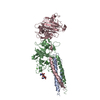
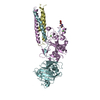
 Components
Components Homo sapiens (human) / References: UniProt: P02671
Homo sapiens (human) / References: UniProt: P02671 Homo sapiens (human) / References: UniProt: P02675
Homo sapiens (human) / References: UniProt: P02675 Homo sapiens (human) / References: UniProt: P02679
Homo sapiens (human) / References: UniProt: P02679

 X-RAY DIFFRACTION / Number of used crystals: 1
X-RAY DIFFRACTION / Number of used crystals: 1  Sample preparation
Sample preparation SYNCHROTRON / Site:
SYNCHROTRON / Site:  ALS
ALS  / Beamline: 5.0.1 / Wavelength: 1 Å
/ Beamline: 5.0.1 / Wavelength: 1 Å Processing
Processing MOLECULAR REPLACEMENT / Resolution: 2.7→30 Å / σ(F): 2 / Stereochemistry target values: Engh & Huber
MOLECULAR REPLACEMENT / Resolution: 2.7→30 Å / σ(F): 2 / Stereochemistry target values: Engh & Huber Movie
Movie Controller
Controller



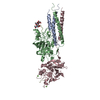

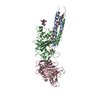
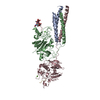
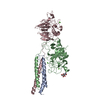
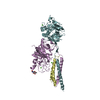
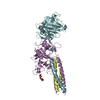
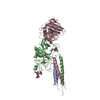
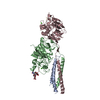
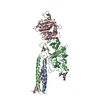
 PDBj
PDBj











